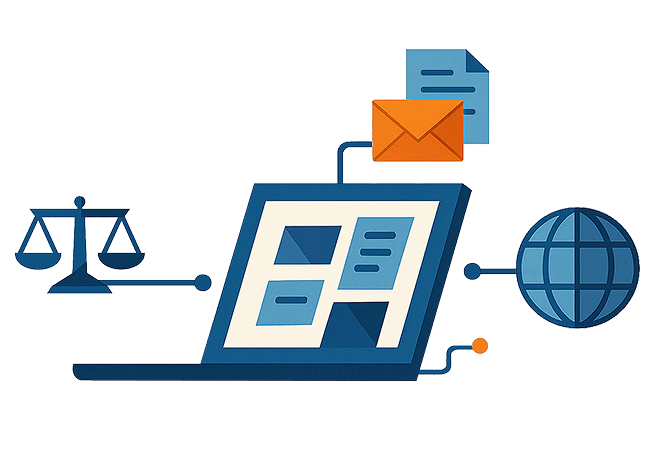ESG Profile
Use Timely Insights to Communicate Your ESG Practices
Identify gaps, perform peer benchmarking, and develop initiatives with Glass Lewis' ESG Profile.

In today’s complex ESG landscape, Glass Lewis' ESG Profile provides actionable insights on ESG performance, covering 6,300 companies. Leverage ESG Scores to track progress, benchmark against peers, and align with key ESG factors to strengthen disclosures.
Key Features and Benefits

Market-Leading Governance Platform
Our Corporate Governance Research is available via our user-friendly governance platform, Governance Hub. Clients can also access our thought leadership, policy guidelines, and engagement letters and resources through the platform.
ESG Profile Insights
ESG Score Summary
Board Accountability Score:
9.7/10
ESG Transparency Score:
9.3/10
Targets and Alignment Score:
10.0/10
Climate Risk Mitigation Score:
5.6/10
Score Breakdown
Prior Year ESG Score*
7.1
Change in ESG Score
1.4 (+19.7%)
Peer AVG. ESG Score
Deviation
Industry
4.7
+3.8 (+80.1%)
Country of Trade
4.7
+3.8 (+80.1%)
Industry & Trade
4.7
+3.8 (+80.1%)
Board Accountability (9.7/10)
Average NED Tenure
4 years
Director Independence
92%
Board Oversight of ESG
Yes
Board Oversight of Cyber
Yes
Lowest Support for Directors in Prior Year
93.4%
Compensation Linked to E&S Metrics
Yes
Prior Year Say on Pay Support
94.1%
Percent Gender Diversity
33%
Diversity Disclosure Assessment
Exemplary
Annual Director Elections
Yes
Pay Ratio
260:1
Failure to Respond to Shareholder Proposal
No
ESG Transparency (9.3/10)
Comprehensive Sustainability Reporting
Yes
GRI-.Indicated Report
Yes
Reporting Assurance
Yes
Reporting Aligns with TCFD
Yes
Discloses Scope 1 & 2 Emissions
Yes
Discloses Scope 3 Emissions
Yes
Reports to CDP
Yes
CDP Climate Score
A-
CDP Forest Score
B
CD Water Score
C
Reports to SASB
Yes
Extent of SASB Reporting
Full Standard
Discloses EE0.1 Report
Yes
2021 CPA.Zicklin Score
85.7 (First Tier)
ESG Targets and Alignment
(10.0/10)
Has GHG Emissions Reduction Target
Yes
UNGC Participant or Signatory
Yes
Has Net Zero GHG Target
Yes
Human Rights Policy Aligns with UDHR or ILO
Yes
Reduction Target Certified by SBTi
N/A
Climate Risk Mitigation
(10.0/10)
TI Management Quality Score
3
Board Oversight of Climate
Yes
TI Carbon Performance Score
N/A
Compensation Linked to Climate
Yes
Climate Lobbying Statement
No
Quality of TCFD Reporting
Poor
Discloses Results of Scenario Analysis
Below 2 Degrees
Related Products and Services


The Evolving Investor Approach to Climate: Examining Shareholder Proposals as a Forum on Climate Change, Reporting and Emissions
Investors’ consideration of climate and other environmental, social and governance (ESG) matters has evolved significantly in recent years.


The Evolving Investor Approach to Climate: Examining Shareholder Proposals as a Forum on Climate Change, Reporting and Emissions
Investors’ consideration of climate and other environmental, social and governance (ESG) matters has evolved significantly in recent years.


The Current State of Board AI Policies and Oversight in Europe in 2025
The 2025 proxy season marked the emergence of artificial intelligence governance as an area of board oversight in European markets.


The Current State of Board AI Policies and Oversight in Europe in 2025
The 2025 proxy season marked the emergence of artificial intelligence governance as an area of board oversight in European markets.


Translating Climate Science Into Investment Decisions
This article explores the tension between climate and investment research, from its origins in the roots of climate science and finance, to its implications for investors and analysts.


Translating Climate Science Into Investment Decisions
This article explores the tension between climate and investment research, from its origins in the roots of climate science and finance, to its implications for investors and analysts.


Challenges to Improving Governance Standards: The Case of Novo Mercado and Issuers in Brazil
This article covers how Brazil's B3 stock exchange attempted to update Novo Mercado governance rules and why proposed reformers were rejected by listed companies.


Challenges to Improving Governance Standards: The Case of Novo Mercado and Issuers in Brazil
This article covers how Brazil's B3 stock exchange attempted to update Novo Mercado governance rules and why proposed reformers were rejected by listed companies.


